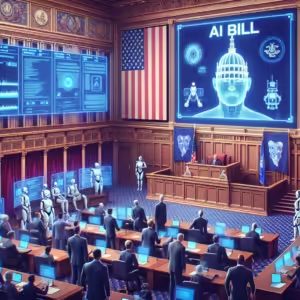Understanding the Current Landscape of AI Regulation in the U.S.
The rapid growth and transformative potential of artificial intelligence (AI) technology have sparked debates across industries and government bodies worldwide. In the United States, the Trump administration’s approach to regulating AI initially promised a light-touch oversight, intended to foster innovation while safeguarding consumer interests. However, key players in the tech industry have raised concerns, urging a reevaluation of these regulation policies.
Why the Call for Reassessment?
Artificial intelligence holds immense potential to revolutionize sectors ranging from healthcare to finance and beyond. However, with great potential comes great responsibility. As AI technologies advance, so do the complexities associated with their ethical and safe deployment.
Key concerns include:
The call for reevaluation stems from the need to address these challenges head-on, ensuring that AI technologies uphold public trust and are used responsibly.
Existing U.S. AI Regulation Framework
The U.S. approach to AI regulation under the Trump administration primarily emphasized promoting innovation. The administration’s policy directives, including the launch of the “American AI Initiative,” aimed to maintain the nation’s global lead in AI development.
Key components of the current framework:
Despite these initiatives, industry leaders argue that the lack of comprehensive regulation may impede long-term progress and foster public skepticism.
The Tech Industry’s Perspective
Industry leaders, including major tech firms and advocacy groups, have voiced their worries over the current regulatory approach. They argue that without robust guidelines, the misuse of AI technology becomes a substantial risk.
Main points raised by the tech industry include:
The tech industry emphasizes that a proactive regulatory framework could strike a balance between innovation and safety, ultimately fostering a more trustworthy AI ecosystem.
Potential Pathways for Policy Revisions
To address the tech industry’s concerns, many suggest a carefully calibrated approach to AI regulation. The aim would be to facilitate innovation while mitigating potential risks.
Suggestions for policy revisions include:
These initiatives could help create a sustainable AI framework where both innovation flourishes, and ethical considerations are prioritized.
A Global Perspective on AI Regulation
While the U.S. grapples with its AI regulatory approach, other countries have moved towards more comprehensive strategies.
Examples from around the world:
These global trends highlight the need for harmonized strategies to avoid regulatory fragmentation and facilitate cross-border cooperation on AI standards.
Conclusion: The Road Ahead for AI Regulation
Balancing innovation and regulation is crucial to realizing the full potential of AI technology. As the tech industry pushes for a reassessment of existing policies, the U.S. government faces an opportunity to reshape its AI regulatory framework. By addressing industry concerns, embracing public-private collaboration, and aligning with global standards, the U.S. can lead the world in pioneering ethical and innovative AI development.
Adaptation to the evolving AI landscape will be vital, ensuring the United States remains a forefront leader in technological progress while safeguarding societal interests. The path forward requires careful deliberation and decisive action—ultimately shaping a future where AI serves humanity’s best interests.








